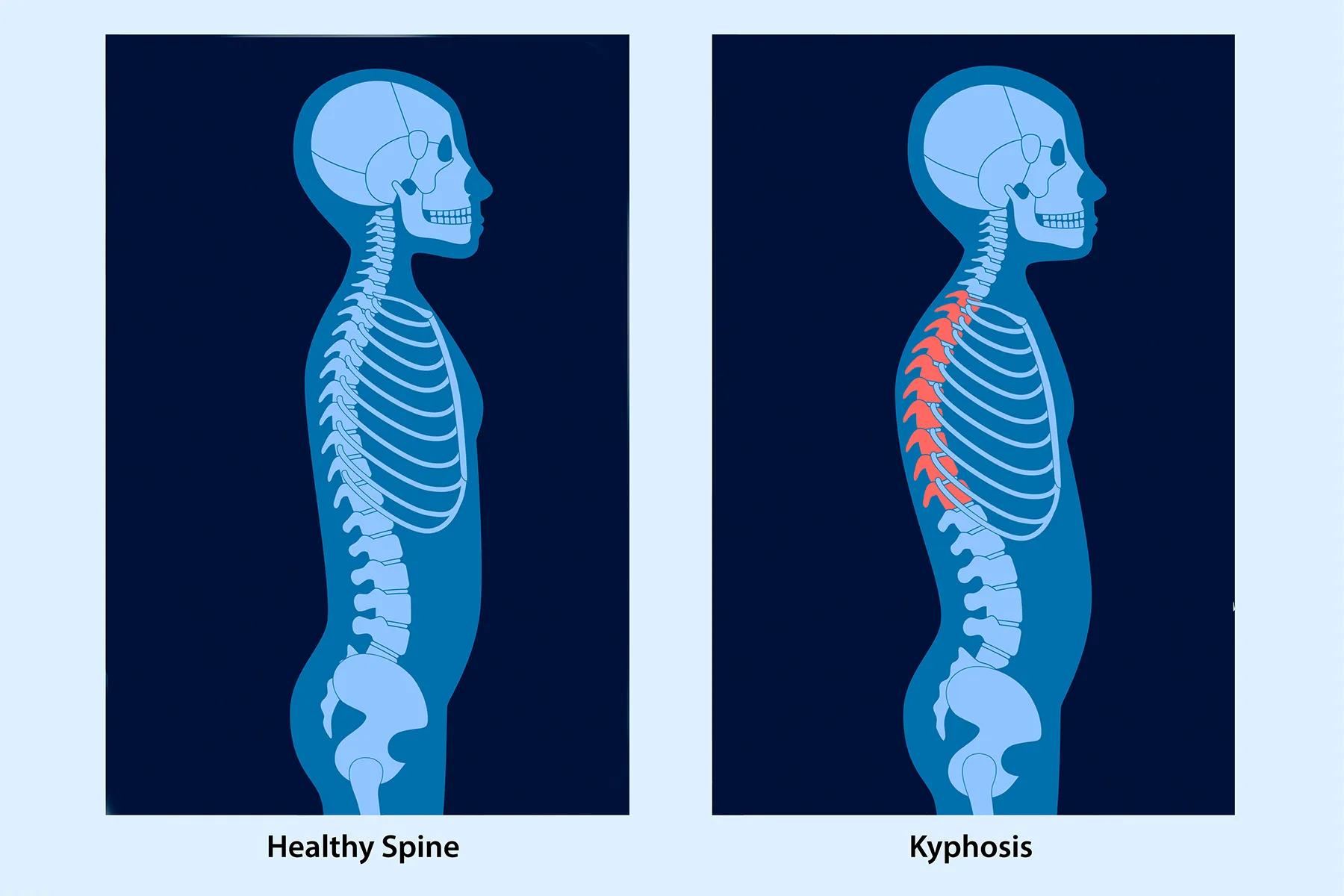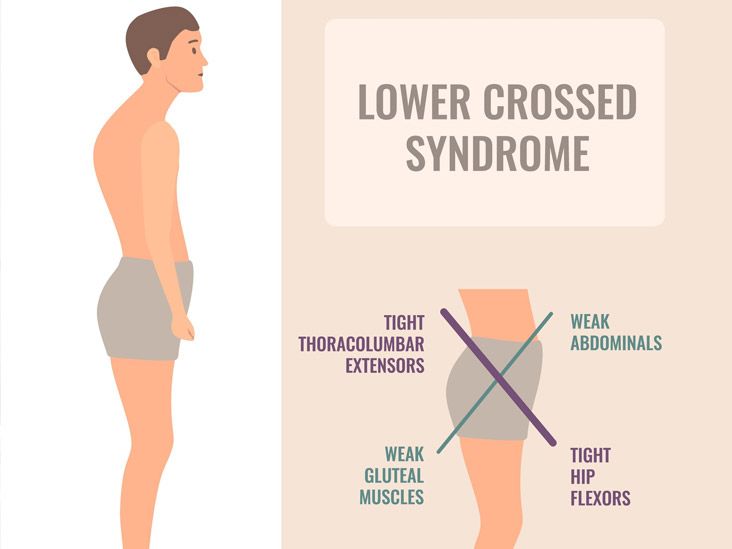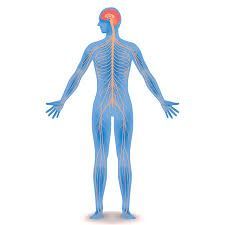
If you’ve ever stood up after a long day at your desk and thought, “Why does my lower back feel like it’s been personally offended?”—you’re not alone. In fact, your posture may be telling a whole story. Enter Lower Cross Syndrome (LCS) : a common postural pattern that shows up when certain muscle groups decide to overachieve while others go on vacation. The good news? You can absolutely fix it—and your favorite chiropractic and massage team is here to help.

We’ve all hit our “funny bone” before — that zinger of tingling pain shooting down your arm that you shake out. But when that sensation starts happening without bumping your elbow, it might not be so funny anymore. You could be dealing with something called Cubital Tunnel Syndrome — a condition that gives your ulnar nerve a bit too much attention for comfort. Let’s break down what’s going on inside that elbow of yours, what causes this pesky problem, how to treat it, and what you can do to keep your funny bone feeling more “fun” than “numb.”

When most people picture a chiropractic adjustment, they imagine a manual adjustment—the quick, precise movement of a chiropractor’s hands creating that signature “pop.” But there’s another technique that’s just as effective, and in many cases, even more comfortable for patients: the Activator. This method uses a small handheld tool called the Activator Adjusting Instrument to deliver safe, gentle, and targeted adjustments. While it might look simple, this little spring-loaded device packs a powerful punch when it comes to improving spinal health and reducing pain. In this post, we’ll break down what the Activator is, why chiropractors use it, how it works, and who can benefit most from this technique.

When you hear the word kyphosis , you might picture someone hunched over with poor posture. But this spinal condition is a lot more interesting—and more common—than most people realize. Kyphosis happens when there’s an exaggerated forward rounding of the upper back. While a little rounding is normal, too much can cause pain, stiffness, and even affect breathing in severe cases. The good news? With the right awareness and care, many people can manage it effectively. Here are six things you may not have known about kyphosis:

Chiropractic care is often surrounded by myths and misconceptions, some of which may lead people to shy away from seeking care or fully understanding its benefits. From concerns about safety to doubts about its effectiveness, many misconceptions persist about chiropractic care. However, as the field of chiropractic continues to grow, research and evidence-based practices help to dispel these myths. In this blog post, we’ll explore some of the most common misconceptions about chiropractic care, and provide evidence to clarify the truths behind them.

Children are constantly growing, learning, and exploring the world around them. From their first steps to their time spent in school and on the playground, their bodies undergo continuous physical stress and development. While pediatric health often focuses on nutrition, vaccinations, and regular checkups, spinal health is sometimes overlooked. Chiropractic care offers a safe, effective way to support proper growth, posture, and overall well-being in children.

If you’ve ever felt nagging lower back pain, persistent tightness in your hips, or a sense of imbalance between your core and legs, you might be dealing with something called Lower Cross Syndrome (LCS). While it sounds complex, LCS is actually a common muscular imbalance that many people—especially those with sedentary jobs or intense training routines—experience. The good news? It’s manageable, preventable, and treatable. And Peak Performance, your local chiropractic and massage therapy team, can be part of the solution.

As we age, maintaining good mobility and quality of life becomes a top priority. While physical changes like joint stiffness, muscle weakness, and decreased flexibility are a natural part of the aging process, there are ways to manage these changes and maintain an active, fulfilling lifestyle. Chiropractic care for seniors can play a vital role in enhancing mobility, reducing pain, and improving overall well-being. In this blog post, we’ll explore the many benefits of chiropractic care for seniors and how it can help you age gracefully while maintaining your independence. 1. Understanding Chiropractic Care Chiropractic care focuses on the relationship between the spine and the nervous system, emphasizing manual adjustments to the spine and joints to alleviate pain, improve mobility, and support overall health. Chiropractors are highly trained to diagnose and treat musculoskeletal conditions, particularly those involving the spine, joints, and soft tissues. For seniors, chiropractic care is not just about alleviating pain; it's also about improving function, preserving mobility, and supporting the body’s natural ability to heal itself. Chiropractic adjustments are a safe, non-invasive way to promote spinal health, improve posture, and help manage the discomfort that often comes with aging. 2. The Aging Body: Common Challenges for Seniors As we age, the body undergoes several natural changes that can impact mobility and quality of life. These changes often include: Decreased Flexibility: As muscles and connective tissues lose elasticity, seniors often experience joint stiffness and reduced range of motion. This can make simple tasks like bending, reaching, and walking more difficult. Osteoarthritis: This common condition involves the gradual breakdown of cartilage in the joints, leading to pain, swelling, and decreased function. It can affect various areas of the body, including the knees, hips, and spine. Postural Changes: Over time, poor posture habits can lead to misalignments in the spine, contributing to back pain, muscle tension, and limited mobility. Falls and Balance Issues: As the body’s balance system weakens with age, seniors are at higher risk of falls. Chiropractic adjustments can help improve balance and reduce the risk of falls by promoting proper spinal alignment and improving joint function. 3. How Chiropractic Care Benefits Seniors Chiropractic care offers a variety of benefits for seniors looking to maintain mobility and quality of life. Below are some of the key advantages: Pain Relief One of the most common reasons seniors seek chiropractic care is to address chronic pain. Whether it’s back pain, neck pain, arthritis, or headaches, chiropractic adjustments can help alleviate discomfort by restoring proper alignment to the spine and joints. This helps to reduce pressure on nerves, improve circulation, and promote the body’s natural healing processes. Improved Mobility and Flexibility Chiropractic adjustments can improve joint mobility, helping seniors regain flexibility and increase their range of motion. This is especially beneficial for individuals suffering from arthritis or age-related stiffness. By restoring alignment and function to the joints, chiropractic care can reduce pain and improve overall movement, making it easier to perform daily activities and enjoy recreational pursuits. Enhanced Posture As we age, our posture tends to decline, leading to slumping, rounded shoulders, or forward head posture. This can result in back and neck pain, muscle fatigue, and limited mobility. Chiropractic adjustments help realign the spine and improve posture, reducing strain on the muscles and joints. Better posture can also increase energy levels and reduce discomfort, allowing seniors to feel more comfortable and confident in their daily lives. Injury Prevention and Fall Risk Reduction Chiropractic care can help improve balance, coordination, and overall physical function. This is especially important for seniors who may have an increased risk of falls. Through regular adjustments, chiropractic care helps keep the nervous system functioning optimally, enhancing balance and coordination. Additionally, chiropractic care can identify and treat musculoskeletal imbalances that may contribute to falls, such as hip misalignments or weakened muscles. Stress Relief and Better Sleep Chronic pain and tension can increase stress and make it difficult to get a good night’s rest. Chiropractic care can help reduce muscle tension and alleviate pain, leading to a greater sense of relaxation and reduced stress. By improving spinal alignment and supporting the body’s natural healing processes, chiropractic adjustments can promote better sleep and improve overall emotional well-being. Support for Other Health Conditions Chiropractors don’t just treat musculoskeletal issues. They can also help seniors manage a variety of other health conditions, such as: Headaches: Chiropractic adjustments can reduce the frequency and severity of tension headaches and migraines by improving spinal alignment and reducing muscle tension. Digestive Issues: Misalignments in the spine can affect nerve function, leading to digestive issues like constipation. Chiropractic care can help improve nerve communication, promoting healthy digestion. Sciatica: Many seniors experience sciatica, which is a sharp pain that radiates down the leg. Chiropractic adjustments can alleviate pressure on the sciatic nerve and reduce pain. 4. Safety and Considerations for Seniors Chiropractic care is generally considered safe for seniors, but as with any medical treatment, it’s important to consider individual health conditions. Before beginning chiropractic care, seniors should consult with their primary care provider to ensure that chiropractic adjustments are appropriate for their specific needs. Some seniors may have certain health conditions, such as osteoporosis, severe arthritis, or recent surgeries, that require modifications to their chiropractic treatment plan. Chiropractors are skilled at tailoring their techniques to accommodate these conditions and ensure that the care provided is safe and effective. Additionally, seniors should choose a chiropractor who is experienced in working with older adults. A knowledgeable chiropractor will understand the unique needs and concerns of seniors and will be able to develop a treatment plan that supports their health goals. 5. The Importance of Regular Care For seniors, chiropractic care is most effective when it is part of a regular maintenance routine. While one or two adjustments may provide temporary relief, regular visits to the chiropractor can help sustain improvements in mobility, pain levels, and overall health. Chiropractic care can complement other health practices such as physical therapy, exercise, and a healthy diet, allowing seniors to maintain an active and independent lifestyle for years to come. Conclusion Chiropractic care is an excellent option for seniors looking to maintain mobility, manage pain, and enhance their overall quality of life. With its emphasis on spinal health, mobility, and pain relief, chiropractic care can help seniors stay active, improve their posture, reduce the risk of falls, and support their overall well-being. By working closely with a chiropractor who understands the unique needs of older adults, seniors can enjoy greater mobility, independence, and vitality well into their golden years. If you’re a senior looking to improve your mobility or address age-related discomfort, consider reaching out to a chiropractor to learn how chiropractic care can support your health and enhance your quality of life. Bethany Wolcott D’Youville Chiropractic ‘26

Pregnancy is an exciting and transformative journey, but it can also bring significant physical challenges. As a mother-to-be, your body undergoes rapid changes to accommodate the growing baby, often leading to discomfort, aches, and postural shifts. Chiropractic care can be a safe and effective way to manage these changes, helping to reduce pain, improve mobility, and prepare the body for a smoother delivery. How Pregnancy Affects the Spine and Pelvis During pregnancy, the body experiences a range of physiological changes, including: Postural Adjustments – As the baby grows, the center of gravity shifts forward, increasing stress on the lower back and pelvis. Hormonal Changes – The hormone relaxin loosens ligaments in preparation for childbirth, which can sometimes lead to instability and discomfort in the spine and joints. Increased Spinal Curvature – The natural curve of the lower back becomes more pronounced, which can contribute to pain and muscle tightness. Pelvic Misalignment – Changes in pelvic alignment can affect the baby’s positioning and potentially lead to a more challenging labor and delivery. Chiropractic care offers a drug-free approach to managing these changes, ensuring the spine and pelvis remain properly aligned for a more comfortable pregnancy. Benefits of Chiropractic Care During Pregnancy 1. Relieves Back, Hip, and Pelvic Pain Many pregnant women experience lower back and hip pain due to the extra weight and shifting posture. Chiropractic adjustments can help realign the spine and relieve pressure on the joints and nerves, providing much-needed relief. 2. Improves Pelvic Balance and Baby Positioning Pelvic misalignment can restrict the amount of space available for the baby to move into the ideal head-down position for birth. Chiropractors trained in the Webster Technique specialize in adjusting the pelvis to create optimal alignment, reducing the likelihood of breech positioning and promoting a smoother delivery. 3. Reduces the Risk of Sciatic Nerve Pain As the uterus expands, it can put pressure on the sciatic nerve, leading to sharp, radiating pain down the lower back, hips, and legs. Chiropractic adjustments help relieve this pressure, reducing discomfort and improving mobility. 4. Enhances Nervous System Function The nervous system controls nearly every function in the body, including those crucial for pregnancy and childbirth. By ensuring proper spinal alignment, chiropractic care helps the nervous system communicate more effectively, supporting overall well-being for both mother and baby. 5. Promotes Better Posture and Balance The additional weight and shifting center of gravity can lead to postural imbalances. Regular chiropractic adjustments help maintain proper posture, reducing strain on muscles and joints. 6. May Contribute to an Easier Labor and Delivery A properly aligned pelvis allows for a smoother labor process by ensuring that the baby has ample space to descend. Studies suggest that chiropractic care may help reduce labor times and the need for medical interventions during delivery. Is Chiropractic Care Safe During Pregnancy? Yes! Chiropractic care is considered safe for most pregnant women when performed by a qualified practitioner. Chiropractors use gentle, pregnancy-specific techniques that avoid unnecessary pressure on the abdomen. Many offices also provide specialized tables and pillows to accommodate the growing belly comfortably. It is always a good idea to consult with your obstetrician or midwife before beginning chiropractic care, especially if you have any pregnancy complications or high-risk factors. When Should You Start Chiropractic Care During Pregnancy? There is no wrong time to start chiropractic care during pregnancy. Some women begin care in the first trimester to help with early postural changes, while others seek treatment later on to address discomfort as their pregnancy progresses. Regular adjustments throughout pregnancy can provide ongoing relief and support. Additional Ways to Support a Healthy Pregnancy Chiropractic care works best when combined with other wellness strategies, including: Prenatal Exercise – Activities like walking, swimming, and prenatal yoga help maintain strength and flexibility. Proper Hydration – Staying hydrated supports spinal health and reduces muscle stiffness. Supportive Footwear – Wearing shoes with proper arch support helps distribute weight evenly and reduces lower back pain. Prenatal Massage – Massage therapy can complement chiropractic adjustments by reducing muscle tension and promoting relaxation. Preparing for Postpartum Recovery Chiropractic care doesn’t stop after delivery. Postpartum adjustments can help realign the spine, support recovery, and address any lingering discomfort from pregnancy and labor. Many new mothers find that chiropractic care helps them regain mobility and energy, making it easier to care for their newborns. Final Thoughts Pregnancy is a time of immense physical change, but it doesn’t have to be uncomfortable. Chiropractic care offers a safe and natural way to support your body as it adapts to pregnancy, helping to relieve pain, improve pelvic alignment, and even contribute to an easier delivery. At Peak Performance, our chiropractors have experience working with expecting mothers and use gentle, pregnancy-friendly techniques to provide the best care possible. If you’re interested in experiencing the benefits of chiropractic care during pregnancy, schedule a consultation with us today! Bethany Wolcott D’Youville Chiropractic ‘26



